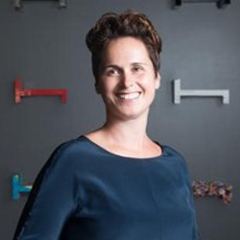Five Common Product Mistakes and How to Avoid Them



“Very few startups die from competition. Most die because they fail to make something users love.”
– Sam Altman, President of Y Combinator
Amanda Richardson, Chief Strategy Officer of HotelTonight, used this insight to kick off her presentation, “Five Things You Are Doing to Destroy Your Product” at the 2018 Mainsail Executive Summit. Her list of five common product mistakes included a lack of defined vision and a lack of useful metrics, but there was one mistake that resonated loudest: “Using Features to Chase Deals.”
It is all too easy to offer one-off features as incentives to close a coveted deal. In fact, offering them may even feel like you’re investing in building a robust product. However, unless those features are important to your core users, they can be seriously detrimental to the growth of your product and the success of your customer base. Satisfying the one large whale will most likely take significantly more engineering, product and support resources than you think and will shift focus away from your core users. It can also lead to a bloated product, capable of doing everything for everyone, but doing it poorly, versus building a targeted user experience designed for specific use cases.
The fix? “Bring your client into the conversation,” says Amanda. Rather than saying yes to all the new features a big prospect wants, she suggests inviting them to your Customer Advisory Council and using the Council as a platform through which key users can share and debate ideas. “These users will gain a sense of prestige and empowerment as they access other leaders in the industry and get to have input; your product team will gain a constant feedback loop with real-time use-cases.”
In addition to “Using Features to Chase Deals,” Amanda presented four other common product mistakes. With each product trap, she offered a solution for digging a way out.
Problem #2: You Have No Vision or Destination
The problem: You’re not committed to a market or a use-case. Rather, you want to be able to serve anyone, to be open to “the next big thing”, or you’ve never really defined your product’s vision and roadmap.
The fix: Become clear on 1) what market you serve and 2) why a customer should pick your solution over a competitor. Along the way, set milestones to validate or disprove that you’re headed in the right direction.
Problem #3: You Pay Attention to “Unique Users”
The problem: You’re building features based on input from a vocal non-core customer (that one customer in a different industry, your friend who is also a customer, etc.)
The fix: Test new features with users from your target market before you build them. Then, when “unique” users request bespoke development that won’t serve the core, use the feedback from target customers to justify why that development might not be a priority.
Problem #4: You Don’t Know Your Product Metrics
The problem: You’re celebrating outputs (launches) instead of outcomes (customer engagement or revenue).
The fix: Track and celebrate metrics that reflect customer value or business progress. Make and review planned features based on their potential to move metrics.
Problem #5: You Go Big or Go Home
The problem: You keep product plans a secret until launch, or resist sharing “partially completed” work.
The fix: Increase the odds that you’ll get it right by getting feedback and iterating along the way. Test assumptions early to be more confident you’re heading in the right direction.

